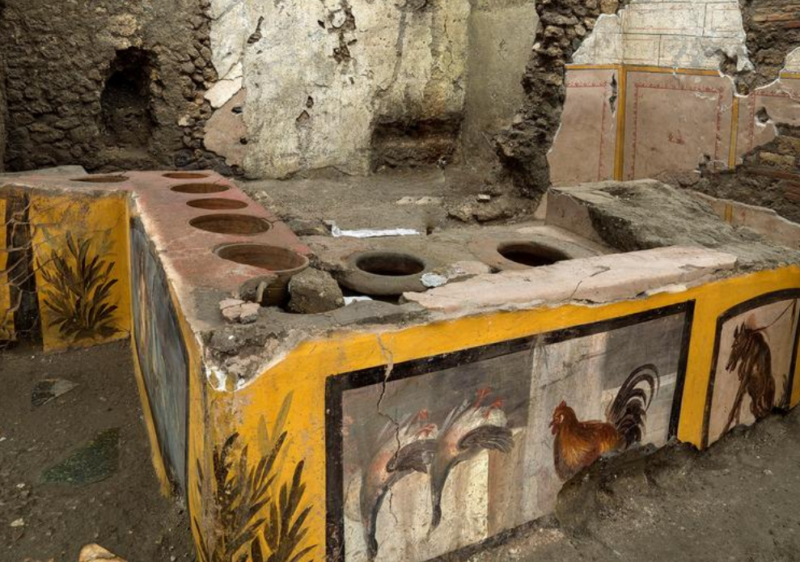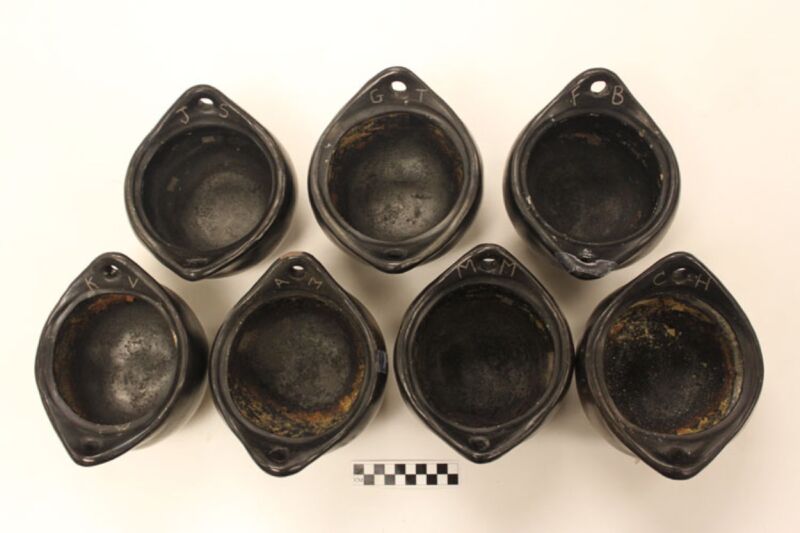-
 chevron_right
chevron_right
Archaeologists excavate ancient Roman takeout counter at Pompeii
Kiona N. Smith · news.movim.eu / ArsTechnica · Monday, 28 December, 2020 - 15:00 · 1 minute

Enlarge (credit: Pompeii Archaeological Park/Ministry of Cultural Heritage and Activities and Tourism/Luigi Spina/Handout via REUTERS)
A recently-unearthed termopolium, or “hot drinks counter” served up ancient Roman street food—and plenty of wine—to the people of northeast Pompeii in the days before Mount Vesuvius destroyed the city in a cataclysmic 79 CE eruption. Painted bright yellow and decorated with detailed frescoes, the counter would have been a quick stop for hot, ready-made food and drinks. And the small shop still holds the remains of its proprietor and perhaps one of its last customers.
Archaeologists found the bones of at least two people in the termopolium. It's difficult to say much about who they were or what they were doing when they died, because looters in the 1600s shoved the skeletons haphazardly out of their way, leaving one scattered around the room and parts of the other stuffed into a large dolium, or serving jar. The scattered set of bones mostly belonged to someone at least 50 years old, who may have been laying in bed when the pyroclastic flow swept through town. Space in the shop is set aside for storing a bed, and archaeologists found nails and wood residue under the scattered remains.
Ancient fast food
The termopolium is a surprisingly modern setup—or maybe it’s more accurate to say that modern quick-serve restaurants are based on a surprisingly ancient model. Food was displayed in deep terracotta jars called dolia, set into holes in the top of the counter, just like plastic or metal tubs set into the counter hold ingredients at Subway or Chipotle today. Presumably the jars could be removed and stored at the end of the day. Archaeologists also found ceramic cooking jars, flasks and amphorae for storing wine, and a bronze drinking bowl.

